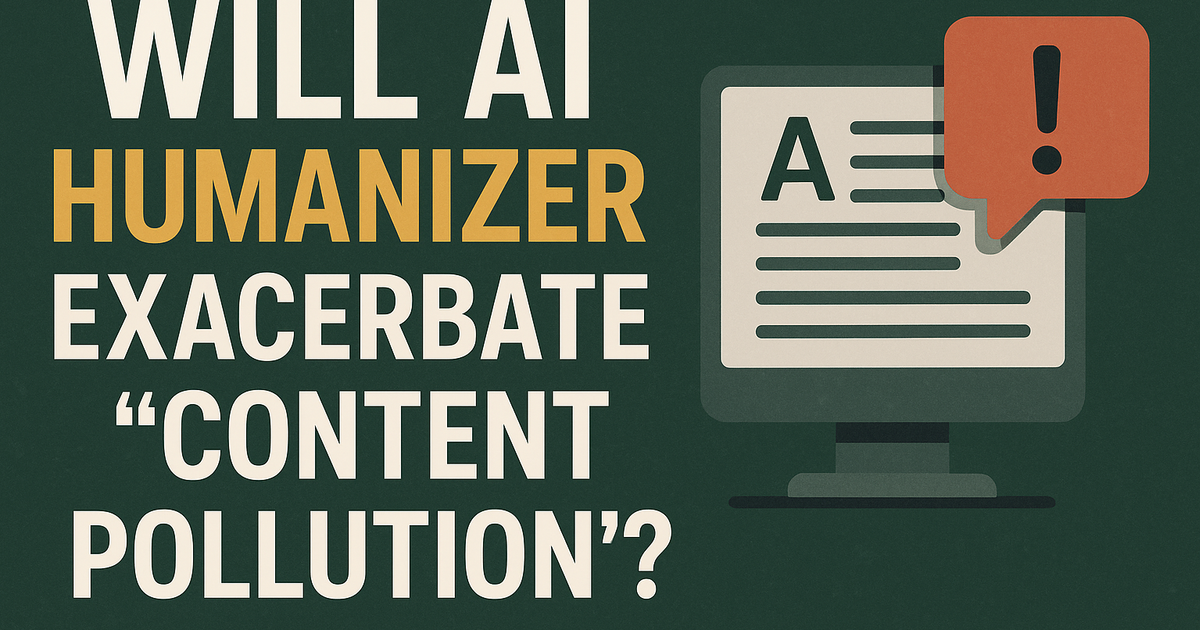Will AI Humanizer Exacerbate "Content Pollution"?
The development of AI writing technology is very rapid nowadays, but the drawbacks of AI writing are also gradually emerging. For example, content written by AI often appears rigid, and the content is repetitive and lacks substance. At this point, we need AI Humanizer to help us refine the text content, making it more vivid and natural. Using AI Humanizer can make your text look more like it was written by a human, enhancing the readability and authenticity of the text content. However, with this convenience comes an issue that should not be overlooked: will AI Humanizer exacerbate content pollution?
What is Content Pollution?
Content pollution refers to the proliferation of a large amount of low-quality, repetitive, or false content on the internet, which makes it difficult for users to obtain real information. Typical characteristics include:
Massive Duplicate Content: The existence of the same or similar articles across different websites and platforms can lead to a certain degree of content repetition, which can affect readers who need to browse and read.
Abundance of False or Misleading Information: Low-cost generated content may contain biased or erroneous information, which can mislead some genuine users or consumers.
Increased Search and Filtering Costs: The widespread application of AI Humanizer can lead users to spend more time distinguishing the quality of the content.
Over-Optimization for SEO: Some content is optimized to please search engines, which may result in neglecting its actual value.
The emergence of AI Humanizer makes the originally mechanized and formulaic AI content more natural and harder to distinguish, which might exacerbate these issues.
Impact of AI Humanizer on Content Pollution
Make low-quality content more "humanized"
AI Humanizer can optimize sentence structure and adjust vocabulary and paragraph logic, which leads to AI text that is closer to human writing style, such as a simple product description or news summary. After being rewritten by AI Humanizer, it may appear more coherent and fluent, making it difficult for users to discern its true source, but the information itself may seem lacking in depth or value.
Accelerating the Overload of Information
With the help of AI Humanizer, bloggers and various content producers can generate a large number of highly personalized articles in a short period of time. As the volume of content on social media and various news platforms surges, the problem of information overload and content noise may worsen further.
Reducing Detection and Regulatory Effectiveness
Originally, AI detection tools could identify a large amount of generated content. However, after using AI Humanizer, the text generated by AI may appear more like human creation, increasing the difficulty of detection. For various educational institutions and publishing organizations, AI Humanizer may make it more complex to determine the authenticity of content.
Potential Spread of False Information
The rewritten content by AI Humanizer appears more fluent and more like it was written by a human, which could make the text's content seem more credible. However, this may also lead to the spread of false information misleading users.
Impact of AI Humanizer on Relevant Industries
News Media: Some small news websites may use AI Humanizer to rewrite news content generated by AI, which could lead to content becoming more repetitive and lacking in depth, providing a very poor reading experience for readers. Not only is the content lacking in substance, but it also becomes less credible.
E-commerce Industry: Product descriptions and reviews on e-commerce platforms, after being rewritten by AI Humanizer, may appear personalized, but in reality, they could be a large amount of templated content, reducing the authenticity of information and diminishing its effectiveness.
Education Industry: Students using AI Humanizer to rewrite AI-generated papers or assignments may make it difficult for detection tools to identify that the content has been rewritten.
How to Alleviate the Content Pollution Risk Brought by AI Humanizer
Strengthen Content Quality Supervision
Platforms and search engines can establish content recognition mechanisms, combined with manual review, to improve content filtering efficiency.
Encourage Original Value Standards
Encourage authors to continuously improve content that is unique, deep, and verifiable, rather than merely pursuing readability.
Transparently Mark AI Rewrite Traces
Annotate content that has been rewritten using rewrite tools, so that users are aware of the source. This helps to build trust between the platform and its users.
Educate Users on Discrimination Skills
Enhance the public's awareness of AI rewritten content, cultivate information filtering and judgment abilities, and reduce the influence of low-quality content.
GPTDetect.ai can detect content rewritten by AI Humanizer
However, the content rewritten by AI Humanizer can still be detected on GPTDetect.ai, and it can still help detect it. Just:
Open the GPTDetect.ai homepage
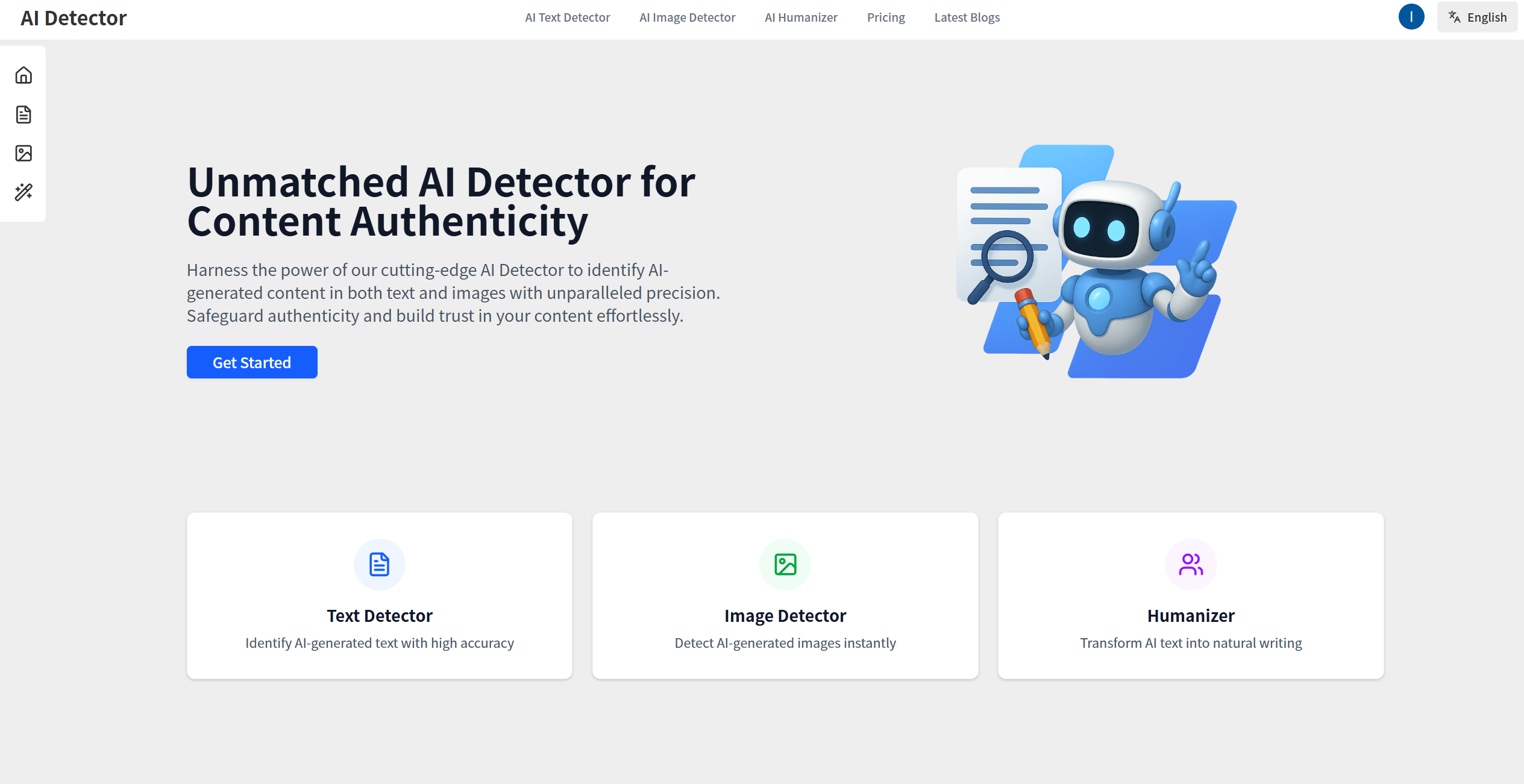
Find the Function of AI Text Detector
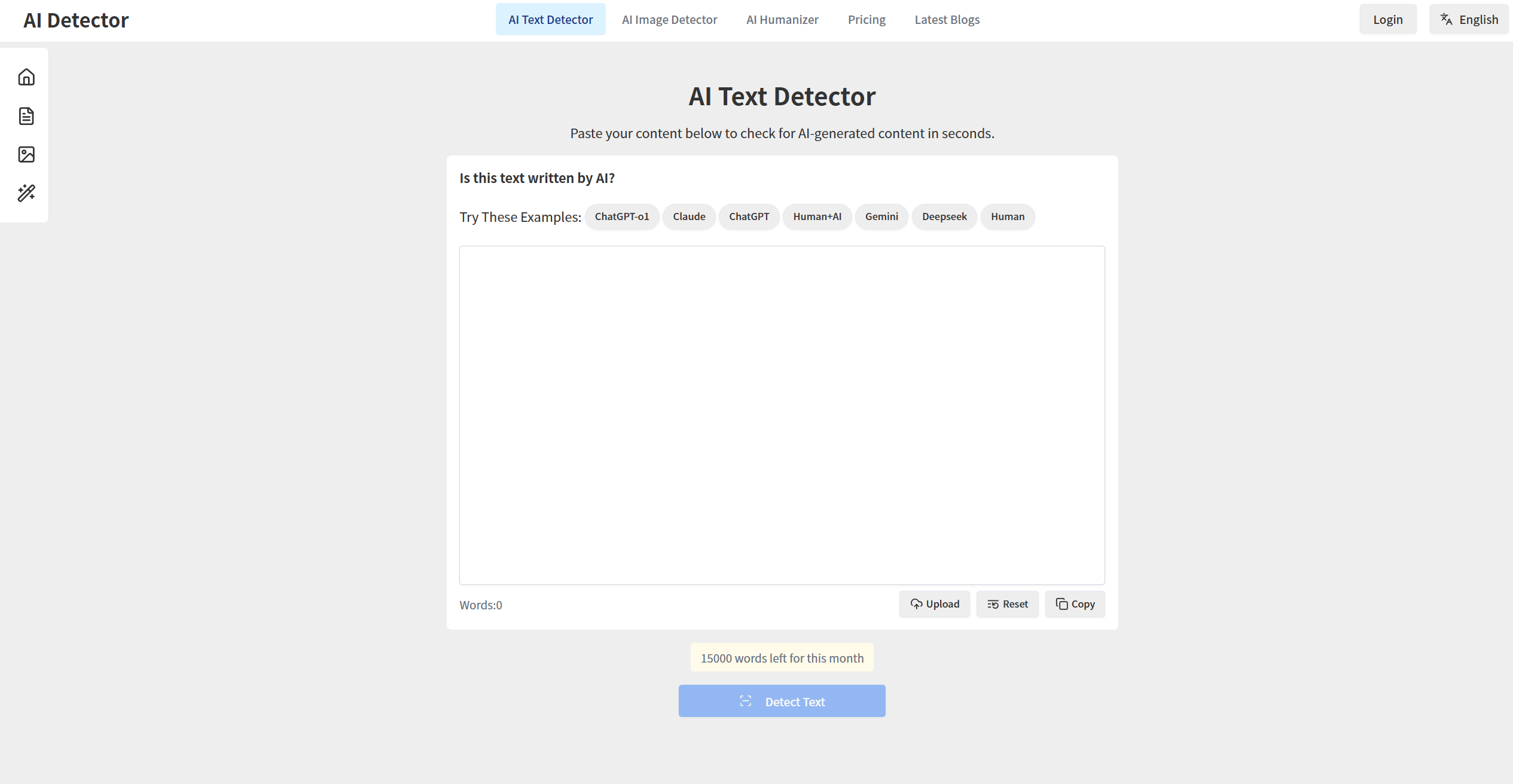
Enter the content you want to detect AI Humanizer generated
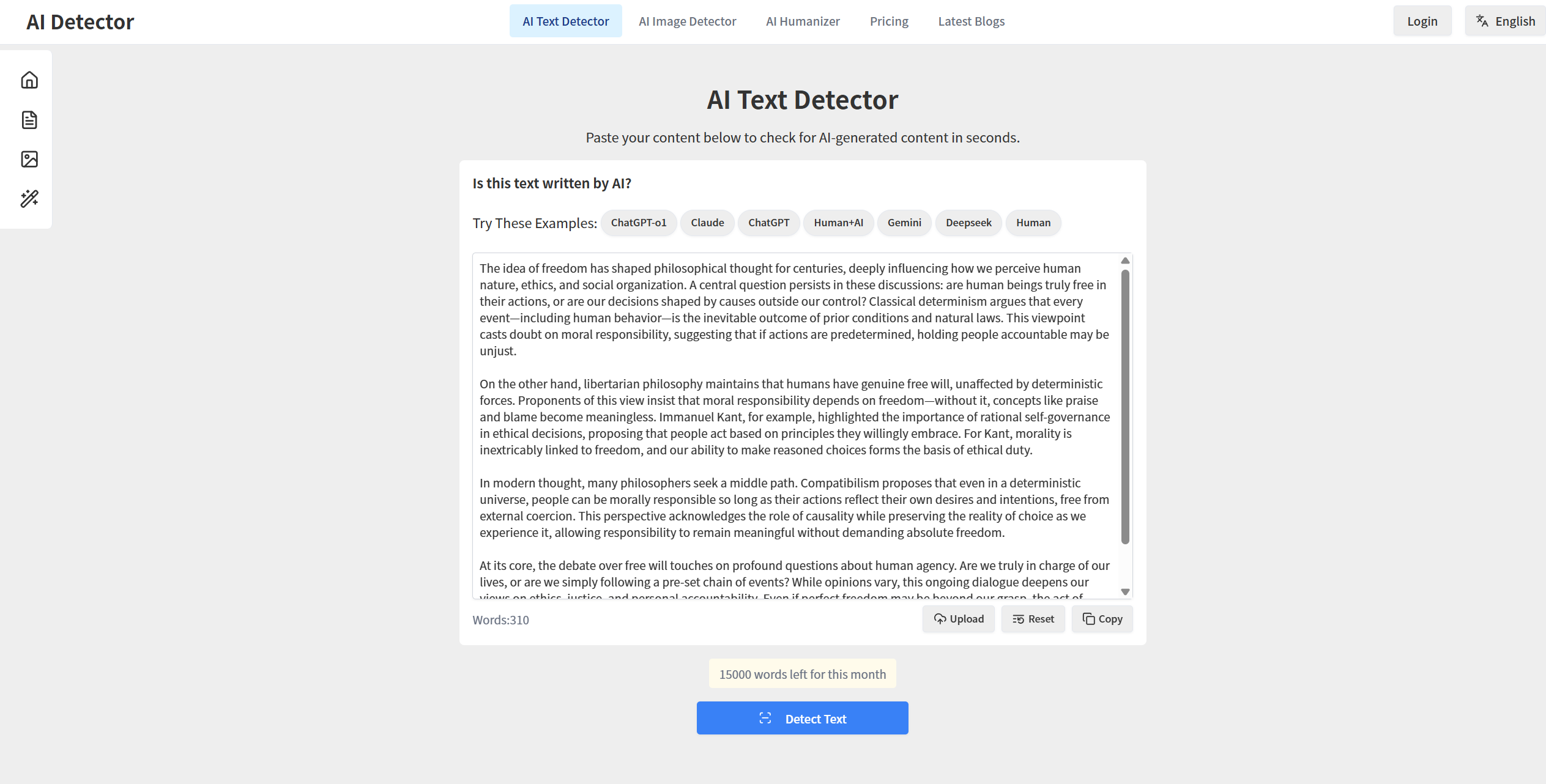
Wait a few seconds to get the result
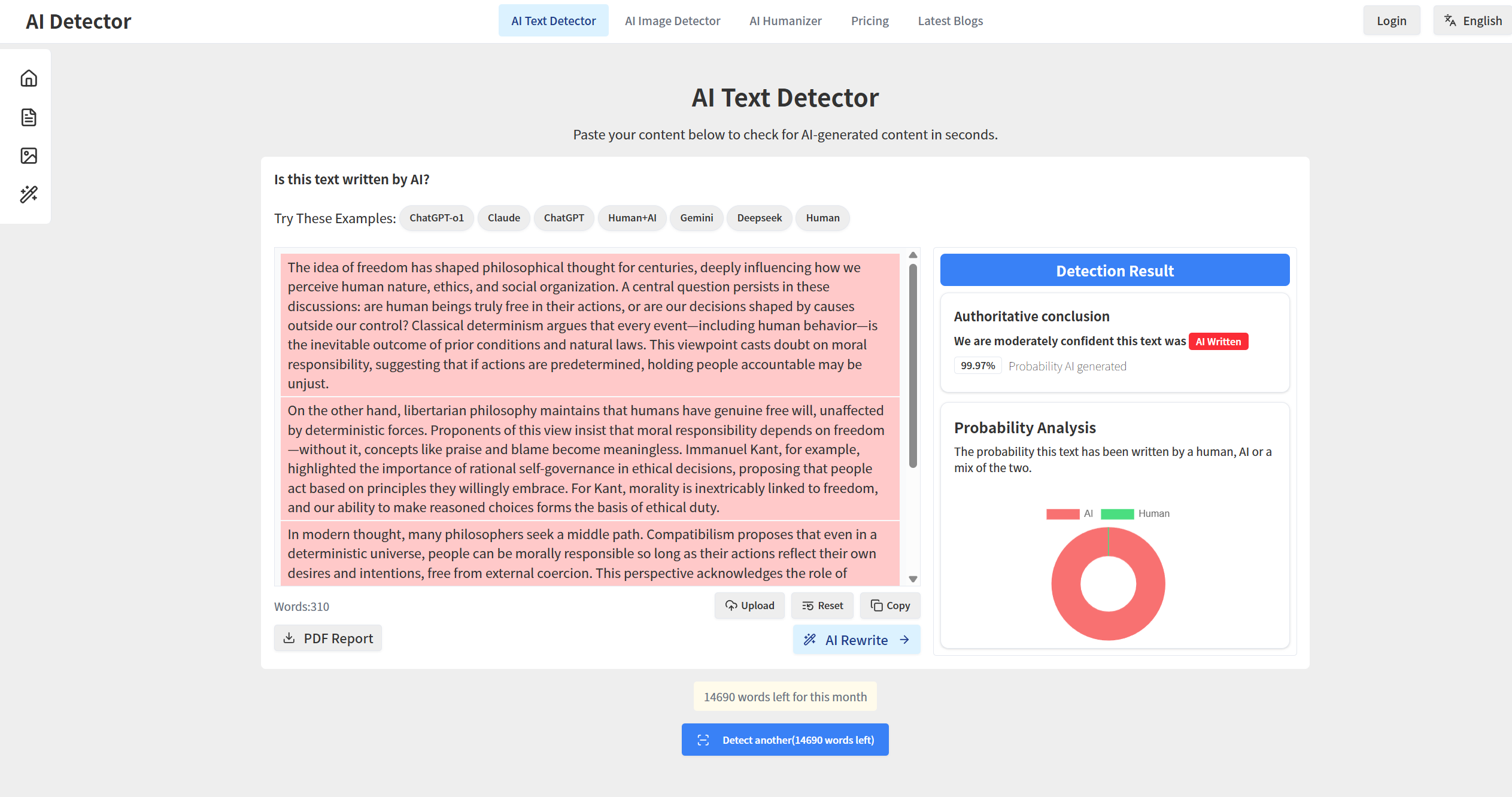
Reasonable Use of AI Humanizer Brings More Benefits
Reasonable use of AI Humanizer can enhance the naturalness and readability of text, but it should not be overused. Overuse may lead to many potential risks. In the future, we need to make more efforts in various aspects to achieve a balance in reasonable use, allowing AI rewriting tools to both improve creative efficiency and maintain the health of the online content ecosystem.
